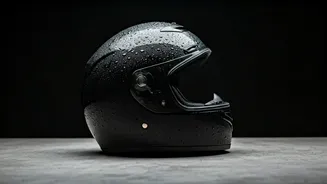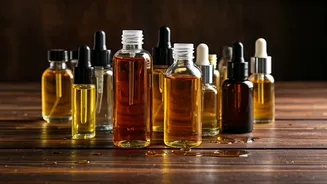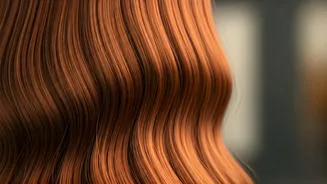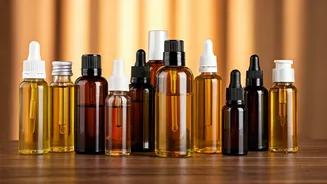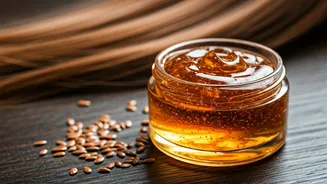Pre-Ride Prep
Before you even think about putting on your helmet, there are a few things you can do to set the stage for healthy hair. First, ensure your hair is dry.
Wet hair under a helmet is a breeding ground for bacteria and can lead to scalp issues. Second, consider using a hair-friendly product that adds a layer of protection between your hair and the helmet. This can be anything from a lightweight leave-in conditioner to a serum designed to combat friction. Third, try a hairstyle that minimizes direct contact with the helmet's surface. Braids, ponytails, or even a loose bun can help reduce pressure and prevent breakage, especially if you have long hair. This will protect your hair from becoming a matted mess under the helmet. Finally, always brush your hair before you put your helmet on to remove any tangles.
Helmet Hygiene Matters
Your helmet itself is a major player in this whole equation. It's essentially a snug, warm environment, perfect for harboring sweat, oil, and bacteria. Thus, regularly cleaning your helmet is crucial. After each use, wipe down the inner lining with a clean, damp cloth. For a more thorough clean, remove the inner pads (if possible) and wash them according to the manufacturer's instructions. Air-dry everything completely before reassembling. Regularly check your helmet for wear and tear, and consider replacing it every few years, especially if you commute daily. You may also think about using a helmet liner, either disposable or washable, to act as a barrier between your hair/scalp and the helmet's inner surface. This will also absorb sweat and oil, keeping your helmet cleaner for longer.
Hair Washing Frequency
How often you wash your hair is crucial and depends on your hair type, scalp oil production, and the climate. Generally, most commuters find washing their hair every day or every other day is necessary. The key is to wash your hair whenever it feels oily, itchy, or sweaty. Use a gentle, sulfate-free shampoo to avoid stripping your hair of its natural oils. Avoid harsh chemicals and opt for shampoos that are specifically designed for your hair type (e.g., dry, oily, or color-treated). Consider using a clarifying shampoo once a week to remove any product buildup from your hair and scalp. Always rinse your hair thoroughly, making sure there's no shampoo residue left behind, as this can lead to irritation and buildup that can clog your pores and cause acne.
The Right Products
Choosing the right hair products is pivotal for maintaining healthy hair and a happy scalp while commuting. As mentioned, sulfate-free shampoos are a great starting point, as they cleanse without over-drying. Look for shampoos and conditioners that contain ingredients like tea tree oil (known for its anti-fungal and antibacterial properties) and aloe vera (for soothing and moisturizing). Avoid products with heavy silicones, as these can build up on the scalp and clog pores. Consider using a lightweight leave-in conditioner to protect your hair from friction and damage. If you use styling products, opt for those that are non-comedogenic (won't clog pores) and apply them sparingly. Experiment with different products to see what works best for your hair type and the specific challenges posed by your commute.
Post-Ride Routine
Your post-ride routine is as important as your pre-ride preparation. Once you remove your helmet, give your hair a good brush to detangle and stimulate your scalp. If your scalp feels itchy or irritated, try applying a soothing hair tonic or serum that contains ingredients like tea tree oil or peppermint oil. If you can't wash your hair immediately after your commute, use dry shampoo to absorb excess oil and sweat. Make sure to rinse the dry shampoo out later. Be mindful of how you treat your hair after the helmet comes off. Avoid tight hairstyles that put pressure on the scalp or that exacerbate helmet-hair effects. Allowing your hair to breathe and be loose for a while after the ride helps it recover.
Scalp Massage Benefits
Regular scalp massage can be an amazing addition to your routine. It stimulates blood flow to the hair follicles, which promotes hair growth and healthy scalp. Massage your scalp gently for a few minutes each day. You can use your fingertips or a scalp massager. The gentle pressure helps to loosen dead skin cells, clear pores, and distribute natural oils. Consider adding a few drops of a carrier oil, such as jojoba or almond oil, to your fingertips to enhance the massage and provide extra moisture to your hair. This practice can be performed any time, either before or after a ride to relax and refresh.
Diet and Hydration
Your diet plays a large role in the health of your hair and scalp. Consuming a balanced diet rich in vitamins, minerals, and protein provides your hair with the necessary nutrients for growth and strength. Eat foods that are rich in iron, zinc, and biotin, as these are especially beneficial for hair health. Stay well-hydrated by drinking plenty of water throughout the day. Dehydration can lead to dry hair and a dry scalp, which can make things a lot worse. Limiting the consumption of processed foods, sugary drinks, and alcohol is also beneficial, as these can negatively impact your overall health and hair condition. Proper nutrition and hydration contribute significantly to overall well-being, and it shows in your hair.
Sun and Environmental Factors
Besides the helmet, exposure to environmental elements impacts your hair. Sunlight, pollution, and wind can cause hair damage and dryness. If you have the option, try to commute during off-peak hours when the air is cleaner. Using a hair product with UV protection can also shield your hair from sun damage. When you're not riding, consider wearing a hat or scarf to protect your hair from the sun and pollution. Avoid prolonged exposure to harsh weather conditions, especially if your hair is already dry or damaged. These protective measures will help to keep your hair healthy and vibrant. Remember to stay hydrated to combat the drying effects of wind and sun.
Addressing Scalp Issues
If you experience any persistent scalp issues, such as dandruff, itchiness, or redness, it's essential to address them promptly. Dandruff can be caused by a variety of factors, including fungal infections, dry skin, or product buildup. Use a medicated shampoo that contains ingredients like ketoconazole or selenium sulfide. If the problem persists, consult a dermatologist. Itchiness might also indicate an allergic reaction to your helmet or a product you’re using. Redness could be due to irritation or inflammation. A professional can help diagnose the issue and recommend appropriate treatment, which may involve prescription medications or specific hair care routines. Never ignore persistent symptoms; seek professional advice.
Long-Term Hair Care
Implementing these hygiene rules is an investment in the long-term health and appearance of your hair. Consistency is key. Make these practices part of your daily or weekly routine, and you'll notice a significant improvement in your hair and scalp condition over time. Remember that healthy hair starts from the inside out. Be patient. Give yourself time to adjust to your new routine. Experiment to find what products and practices work best for your hair type and the demands of your commute. Celebrate the little wins. Appreciate how much more confident you'll feel when your hair looks and feels good. Remember that consistent care translates to healthier hair and a happier commute.
